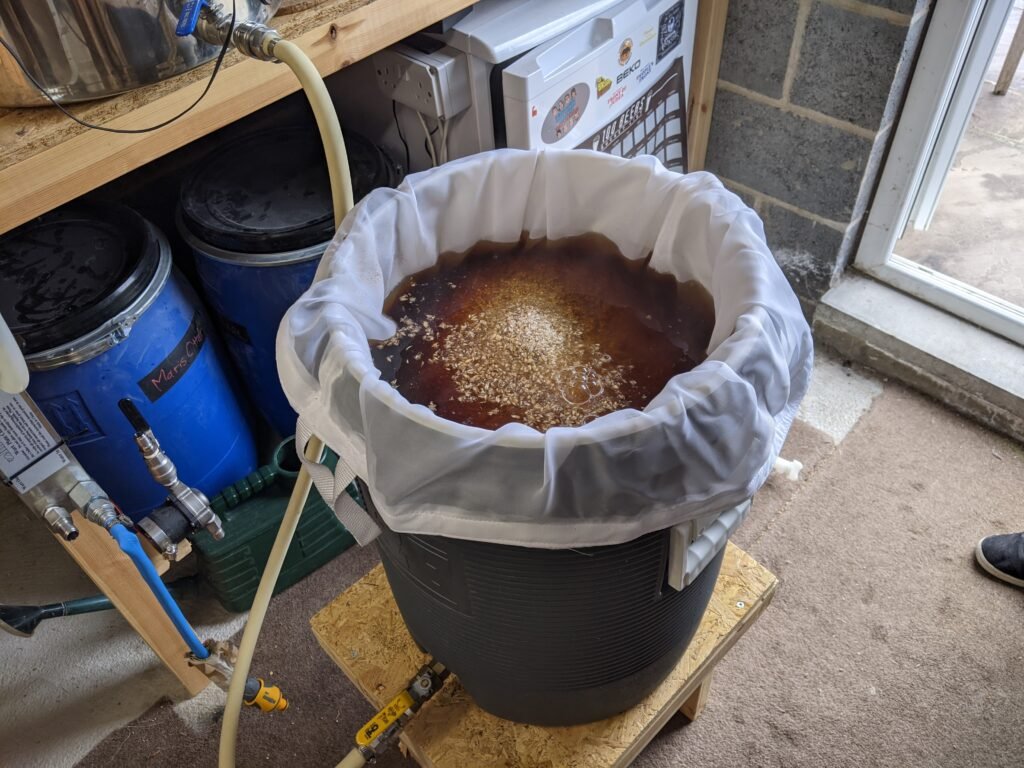Understanding the Basics of Homebrewing
Homebrewing is both an art and a science, allowing enthusiasts to create their own beers tailored to individual tastes. The brewing process begins with the selection of ingredients, primarily water, malted grains, hops, and yeast. The interaction of these components during the fermentation process leads to the creation of the beverage. Understanding each ingredient’s role is crucial for anyone considering an all grain homebrew setup.
The brewing process typically follows a series of steps: mashing, boiling, fermenting, conditioning, and packaging. Mashing involves soaking the malted grains in hot water, allowing enzymes to convert starches into sugars. The resulting mixture, known as wort, is then boiled and hops are added to impart flavor and aroma. Following this, yeast is introduced, which ferments the sugars, generating alcohol and carbonation. The final stages involve conditioning the beer to develop its flavor before packaging it for consumption.
For many first-time brewers, starting with kits presents a straightforward and less intimidating approach. These kits provide pre-measured ingredients and step-by-step instructions, simplifying the initial brewing process. This convenience allows novice brewers to familiarise themselves with the basic components of brewing without the complexity associated with an all grain homebrew setup. Additionally, using kits provides an excellent opportunity to experiment with different styles and flavors before transitioning to more advanced techniques.
As brewers gain experience, they often seek to explore more intricate brewing methods. Transitioning from kits to an all grain homebrew setup can expand creative possibilities and allow complete control over ingredients. This mastery over the brewing process can lead to the development of unique flavors, resulting in a more personalised brewing experience. Understanding the foundational aspects of homebrewing is essential for anyone looking to elevate their craft.
What is All-Grain Brewing?
The previous post taught you a lot about the basics of brewing, the key points and then the methods to get started. All-grain brewing represents a significant advancement in the homebrewing process, bringing a new level of complexity and satisfaction for those passionate about crafting their own beer. In contrast to extract brewing, which relies on pre-processed malt extracts, all-grain brewing utilises whole grains as the primary source of fermentable sugars. This fundamental difference is pivotal, as it provides brewers with more control over the brewing process and the final flavor profile of their beer.
The essence of all-grain homebrew setups lies in the mashing process, where crushed grains are steeped in hot water. This step enables enzymes within the grains to convert starches into fermentable sugars, resulting in a wort that carries unique flavors and aromas inherent to the specific malt used. The choice of grains allows for a broader range of flavor nuances, from light and fruity to rich and malty, offering brewers the opportunity to explore various styles and characteristics in their brews.
Another advantage of utilising an all-grain setup is the heightened level of customisation options. Homebrewers can select individual malts and adjuncts, tailoring their recipes to craft a beer that truly reflects their vision. This level of detail fosters a deeper understanding of the brewing process and encourages brewers to experiment and innovate, pushing the boundaries of traditional beer styles.
Overall, transitioning to all-grain brewing not only enhances the quality of the final product but also enriches the brewer’s experience by merging art and science in a harmonious way. As such, many homebrewers find that switching from extract brewing to an all-grain approach opens up new avenues for creativity and mastery within their brewing journey.
Equipment Upgrade: What You Need for All-Grain Brewing
Transitioning from a basic homebrewing kit to an all grain homebrew setup represents a significant advancement in brewing capabilities. This process requires specialised equipment that enables brewers to efficiently extract sugars from raw grains and produce a higher quality beer. Here, we discuss the essential tools necessary for anyone considering an all-grain brewing system.
First and foremost, a mash tun is an indispensable part of an all grain homebrew setup. This piece of equipment allows you to steep your grains in hot water, facilitating the conversion of starches to fermentable sugars. While many homebrewers initially use insulated coolers as mash tuns due to their affordability and efficiency, there are also purpose-built vessels available that come with additional features for precise temperature control.

Equally important is a lautering system, which can take the form of a dedicated lauter tun or a system integrated within the mash tun. This equipment plays a crucial role in separating the liquid wort from the solid grain bed after mashing, ensuring that you extract all available sugars for fermentation. Additionally, a sparging setup – using either a manifold or a specialty sparging arm – facilitates the rinsing of the grains, maximizing sugar extraction and improving overall efficiency.
Beyond these fundamental components, certain tools significantly enhance the brewing experience. A hydrometer or refractometer is essential for measuring the specific gravity of the wort, allowing brewers to monitor fermentation potential. Similarly, a mash paddle aids in thoroughly mixing the grain and water, ensuring even heat distribution and better enzymatic action during mashing. Investing in these tools will ultimately elevate the quality of your all grain homebrew setup, paving the way for improved brewing outcomes.
Learning the All-Grain Brewing Process
The transition from kit-based brewing to an all-grain homebrew setup can appear daunting, yet it offers an enriching experience that promotes a deeper understanding of the brewing craft. The all-grain brewing process consists of several key steps, namely mashing, sparging, and boiling, each critical for producing high-quality beer.
First, let us explore the mashing process. This phase involves mixing crushed grains with hot water, typically at a temperature range of 150-160°F (65-71°C). During mashing, enzymes within the malt convert starches into fermentable sugars, which is crucial for achieving the desired alcohol content and flavor profile. It is essential to maintain the temperature within this range for an adequate duration, often around 60 minutes, to ensure optimal sugar extraction. Monitoring the mash temperature is vital as a deviation can lead to undesired results.
Following mashing, the next step is sparging, which entails rinsing the grain bed with hot water to extract remaining sugars. This process enhances overall efficiency and can be performed using various methods, such as batch sparging or fly sparging. The objective here is to collect a wort (unfermented beer) rich in sugars, which will later be boiled with hops for flavor and aroma. The amount of water used during sparging significantly impacts the final volume and gravities of the brew.
Once the wort is collected, it proceeds to the boiling stage. Boiling is a critical phase that serves multiple purposes: it sterilises the wort, evaporates undesirable volatile compounds, and integrates hops for bitterness, flavor, and aroma. Typically, the boiling duration ranges from 60 to 90 minutes, depending on the recipe and desired characteristics of the final beer. Timing and technique during this step will ultimately influence the balance and complexity of flavors in the finished product. Mastering these steps can greatly enhance one’s all-grain homebrew setup, paving the way for crafting unique and exceptional brews.
Selecting the Right Grains and Ingredients
Choosing the optimal grains and ingredients is a pivotal step when transitioning to an all grain homebrew setup. The selection of malt plays a crucial role in determining not only the flavor but also the aroma, mouthfeel, and color of your finished beer. Different grains contribute distinct characteristics; for instance, pale malts form the cornerstone of most beer varieties while specialty malts, such as crystal or roasted malts, add unique flavors and complex aromas. Understanding how to manipulate these malts can empower brewers to create customised flavor profiles tailored to their preferences.
When selecting grains, consider the style of beer you are aiming to produce. For example, if crafting a rich stout, incorporating roasted barley can impart a deep coffee-like flavor, while a hoppy American Pale Ale would benefit from a blend of pale and crystal malts for a balanced sweetness. Furthermore, experimenting with adjuncts, such as corn or rice, might help in achieving lightweight and crisp characteristics often desired in lagers. Thus, the key lies in the careful selection that suits your beer style.
Beyond the grains, hops and yeast are equally significant elements in your all grain homebrew setup. Hops provide bitterness to balance the sweetness of malts and contribute aromatic qualities; choosing hop varieties that complement your chosen malts enhances the overall experience. Yeast, on the other hand, is responsible for fermentation and contributes to the beer’s final flavor and aroma. Selecting the right yeast strain according to the desired beer profile can dramatically alter the result.
Lastly, sourcing quality ingredients is paramount for successful homebrewing. Building relationships with local suppliers or sourcing from reputable online retailers ensures that you have access to the freshest grains, hops, and yeast available. This is essential for maintaining the integrity of your all grain homebrew setup, enabling you to brew beers that not only taste great but are also consistent with each batch.
Recipe Development: Crafting Your First All-Grain Brew
Transitioning from homebrew kits to an all grain homebrew setup offers brewers a chance to explore deeper aspects of flavor and aroma in their crafted beverages. At the core of creating your first all-grain brew is understanding the critical balance between sweetness, bitterness, and aroma. With a more flexible recipe design process, you can achieve a brew that is tailored to your taste preferences.
To begin crafting your recipe, select your base malt as the foundation for your brew. Base malts, such as Pale or Pilsner malts, provide fermentable sugars while contributing to the beer’s body and mouthfeel. As you weigh your options, consider specialty malts to enhance flavor complexity; for instance, using Crystal or Munich malt can impart additional sweetness and deeper color to your brew.
Once you’ve established your malts, proceed to hop selection, which plays a pivotal role in balancing sweetness with bitterness. Hops contribute aromatic qualities and define the bitterness of the beer. When choosing hops, think about their alpha acid content, which directly affects the bitterness level. For your first attempt, a straightforward approach could include adding hops during the boil for bitterness and then introducing aroma hops towards the end to create a pleasing bouquet of flavors.
Lastly, yeast selection is essential in defining the character of your all-grain brew. Different yeast strains can interact distinctly with your chosen ingredients, producing varied profiles in terms of esters and phenols. Research various yeast options that complement your chosen style, ensuring that the yeast harmonises with the malt and hops.
By experimenting and adjusting your recipe, you can create a beer that reflects your personal taste. Developing your first recipe may take some practice, but the rewarding experience of enjoying your uniquely crafted brew will be worth the effort.
Troubleshooting Common All-Grain Issues
Transitioning to an all grain homebrew setup often presents a unique array of challenges for brewers who are accustomed to using kits. One of the most frequently encountered issues is the occurrence of stuck mashes. This problem arises when the grain bed becomes compacted, restricting the flow of wort through the filter. To prevent this, it is crucial to employ proper milling techniques. Finely milling the grain allows for better water interaction, but also creates a risk of over-crushing. A balance must be struck; a slightly coarser grind can yield better flow rates without compromising efficiency.
Another common problem during the brewing process is low efficiency, which can lead to a disappointing final product. This often stems from insufficient conversion of starches to sugars, which can occur due to various factors, including mash temperature and time. To enhance efficiency, brewers should carefully monitor the mash temperature and ensure it is maintained within the optimal range for the specific enzymes present in the grains. Additionally, increasing the duration of the mash can sometimes improve sugar extraction, allowing for a fuller-bodied beer.
Off-flavors, such as diacetyl or iodine notes, can also emerge during all grain brewing. These flavors typically indicate issues with fermentation or improper sanitation procedures. Ensuring that all equipment is thoroughly cleaned and sanitised prior to use is vital in mitigating these risks. Furthermore, attention should be paid to fermentation temperatures, as significant fluctuations can exacerbate the production of unwanted flavors. By identifying and addressing these common issues associated with an all grain homebrew setup, brewers can significantly enhance the overall quality of their beers and enjoy a gratifying brewing experience.
Tips for Successful All-Grain Brewing
Transitioning to an all grain homebrew setup offers brewers the opportunity to create more complex and flavorful beers. However, success in all-grain brewing hinges on several key practices that enhance the brewing process and ensure consistency. One of the foremost aspects of a successful all grain homebrew setup is temperature control. Maintaining the appropriate temperature during the mash is critical as it influences the efficiency of starch conversion to sugars. Ideally, aim for a mash temperature between 150°F to 155°F (65°C to 68°C), and utilise thermal insulators or heat exchangers to stabilise this temperature throughout the brewing process.
In addition to temperature, proper sanitisation is paramount during the all-grain brewing process. Any unwanted bacteria can spoil your batch, leading to undesirable flavors and aromas. Ensure that all equipment—such as mash tuns, fermentation vessels, and utensils—are thoroughly sanitised before use. Utilise food-grade sanitisers, and rinse away excess residue to avoid any adverse effects on the final product. Such meticulous attention to sanitisation will not only safeguard your beer but also bolster the entire all grain homebrew setup experience.
Moreover, tracking your brewing process through a brewing journal can be immensely beneficial. Documenting specific details, such as ingredient quantities, mash times, and fermentation temperatures, will allow you to identify successful techniques and replicate them in future brews. Additionally, noting any deviations or errors will help prevent repeating mistakes. A brewing journal is an invaluable tool that will not only improve your all-grain beer consistency but also deepen your understanding of the brewing art.
By focusing on these tips, including maintaining temperature, ensuring proper sanitisation, and keeping a detailed brewing journal, you can elevate your all grain homebrew setup and achieve desired results consistently.
Embracing the All-Grain Community
The transition to an all grain homebrew setup marks a significant milestone in a homebrewer’s journey. As enthusiasts undertake this evolution, they often discover the invaluable role that community plays in this pursuit. Engaging with fellow brewers can provide essential support and encouragement, making the learning process significantly more enjoyable and effective. A good starting point would be the subreddit r/homebrewing. Connecting with others who share a passion for all-grain brewing can foster an environment ripe for collaboration, knowledge sharing, and inspiration.
There are numerous avenues to explore when seeking community engagement in the world of homebrewing. Online forums and social media groups dedicated to all-grain brewing are excellent platforms to seek advice, share experiences, and discuss techniques. Additionally, many local clubs and organisations focus on brewing, offering everything from workshops to tasting events. By participating in these gatherings, brewers can broaden their understanding and refine their own all grain homebrew setup with insights gained from more experienced members.
Participating in local homebrew competitions is another suitable way to immerse oneself in the all-grain community. These events often attract a diverse group of brewers, allowing individuals to showcase their creations and receive constructive feedback. Engaging in such activities not only helps one to objectively evaluate their own brews but also facilitates the forging of valuable connections with fellow homebrewers who can provide guidance and support. Over time, these relationships can develop into lasting friendships rooted in the mutual love for brewing.
In conclusion, embracing the all-grain brewing community significantly enriches one’s homebrewing journey. Sharing experiences and learning from fellow brewers cultivates an atmosphere of collaboration and inspiration. Whether through online platforms, local clubs, or competitions, the connections formed can elevate the brewing experience, making every batch brewed a testament to personal growth and communal knowledge.

